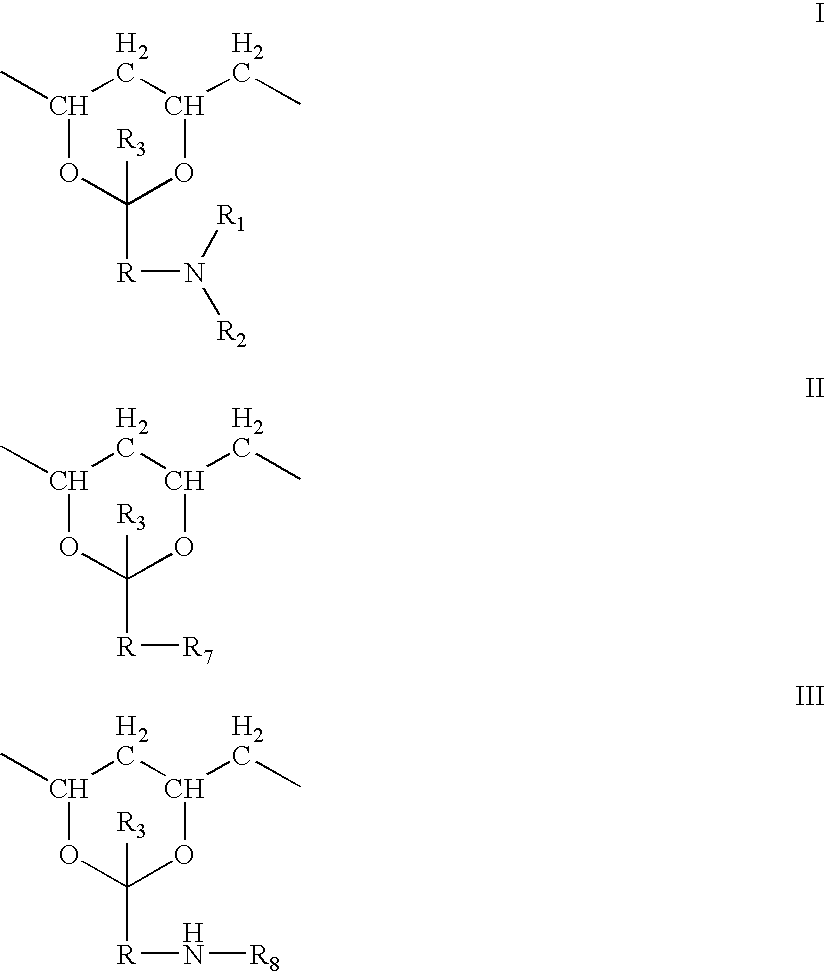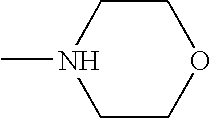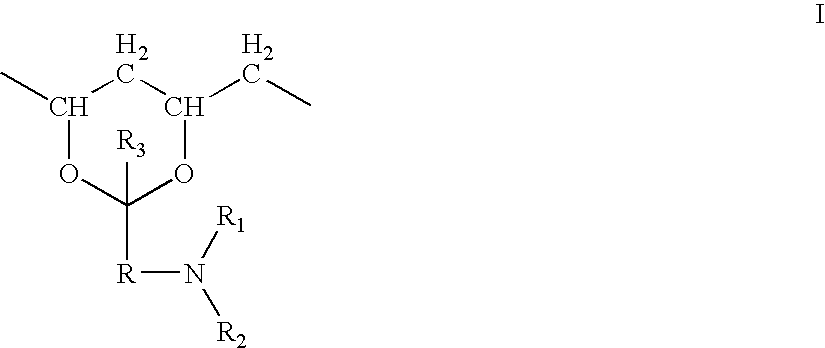Ink formulations and uses thereof
- Summary
- Abstract
- Description
- Claims
- Application Information
AI Technical Summary
Benefits of technology
Problems solved by technology
Method used
Image
Examples
example 1
[0094]This example illustrates how to prepare a master batch of the ink of the present invention.
[0095]A master batch of blue ink was prepared by grinding 32.08 g (11.8% by weight) phthalocyanine blue (PCN) (pigment), 171.78 g (63.0%) nelfilcon (acrylated-poly(vinyl alcohol) and 69.00 (25.3%) water with an attritor grinding system. The attritor grinding system is developed using a solid Teflon single milling impeller (EMS T60, BYK Gardner) connected to ⅜″ stainless steel shaft. The shaft is driven by an Arrow 6000 1 / 10 hp direct drive mixer. Approximately 200 ml Zirconia beads (1.6-2.5 mm diameter, BYK Gardner) are placed in a 500 ml stainless steel water-jacketed container (500 ml capacity, BYK Gardner) along with the Teflon impeller head. The nelfilcon prepolymer was added, followed by the PCN blue. The impeller speed was set to 1200-1000 rpm and allowed to grind over a 64-hour period. The beads were removed by pouring the resulting liquid through a mesh. The master batch was stor...
example 2
[0099]Fourteen water-based cyan pad-printing inks (2A-2N) were prepared from the master batch of PCN ink as prepared in Example 1 (11.8% PCN blue, 63.0% nelfilcon and 25.3% water). Each cyan pad-printing ink is prepared by dilution the maser batch of PCN ink with water and nelfilcon, with compensation for the added nelfilcon and water in the PCN master batch.
[0100]Viscosity measurements are performed using the Brookfield LVTDV-II at 25° C., 60 rpm with a spindle 16. The results are put forth in Table 1.
[0101]
TABLE 1NelfilconPCNWaterViscosityLn(visco-Sample(wt %)(wt %)(wt %)(cps)sity)2A71.01.028.03445.842B71.01.028.03365.822C53.02.844.31264.842D47.01.052.060.14.102E59.01.040.01384.932F47.01.052.062.14.132G59.08.033.07156.572H71.08.021.0N / A2I47.08.045.03025.712J59.04.536.53065.722K71.08.021.0N / A2L65.06.328.87086.562M47.04.548.51164.752N47.08.045.02875.66
[0102]Those samples indicated “N / A” were not measured for viscosity, since they were known to be of very high viscosity by way of vis...
example 3
[0103]Examples 2A, 2B, 2I, 2J, and 2N were applied to contact lenses using standard pad-printing techniques on a manual printer. Specifically, the ink was applied by drawing drops of ink across a typical cliché pattern. The pattern was lifted out of the cliché with a silicon pad and transferred to the male side of a polypropylene contact lens mold.
[0104]The female mold was filled with 100 μl nelfilcon using an Eppindorf multipipettor. The male mold was press fit over the female and compressed to ˜24 psi. The lenses were cured with either a handheld UV source (Spectroline model EMF-260, 365 nm button) for 300 sec at ˜0.5 cm or with Dr. Gröbel's light source (UV-LQ 400 / C, a high-pressure mercury arc lamp, available from Dr. Gröbel UV-Elektronik GmbH) for 7 seconds at ˜0.5 cm. For Dr. Gröbel's light source, a condenser and a 305 nm cut-off filter is placed in front of the light source. A chart of the measured light intensities at different wavelengths is shown in Table 2.
[0105]Intensit...
PUM
| Property | Measurement | Unit |
|---|---|---|
| Fraction | aaaaa | aaaaa |
| Fraction | aaaaa | aaaaa |
| Fraction | aaaaa | aaaaa |
Abstract
Description
Claims
Application Information
 Login to View More
Login to View More - R&D
- Intellectual Property
- Life Sciences
- Materials
- Tech Scout
- Unparalleled Data Quality
- Higher Quality Content
- 60% Fewer Hallucinations
Browse by: Latest US Patents, China's latest patents, Technical Efficacy Thesaurus, Application Domain, Technology Topic, Popular Technical Reports.
© 2025 PatSnap. All rights reserved.Legal|Privacy policy|Modern Slavery Act Transparency Statement|Sitemap|About US| Contact US: help@patsnap.com



